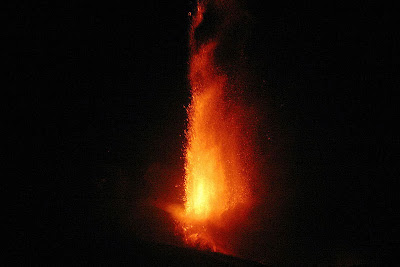
Volcanoes are among the most dangerous and least predictable natural forces on our planet. New findings may contribute to better volcano surveillance and eruption prognoses.
To understand the processes at work inside volcanoes, geologists survey cracks filled with magma, so-called dykes. These dykes are the main transport channels for magma through the Earth’s crust, and they control the growth of the magma chambers and the size of eruptions.
Understanding how dykes form and grow is crucial to volcano research. A new study published in Nature Communications, led by researchers at Uppsala University, shows that the strength of the rock surrounding a magma chamber determines the size of its dykes.
During several months’ field work in Iceland and on the Canary Islands, researchers measured the thickness of thousands of dykes. The results were analysed statistically, giving some surprising results.
“We were surprised that all our datasets showed the same statistical distribution. Neither the type of volcano, nor the type of dyke seemed to make any real difference. The Weibull distribution was always the best fit”, says lead author Michael Krumbholz, researcher at the Department of Earth Sciences at Uppsala University.
The Weibull distribution is well-known in materials science and is named after Waloddi Weibull who was active at Uppsala University. The Weibull distribution is known as the “weakest link theory” and predicts mathematically that a material will break first at its weakest point.
“The Weibull distribution’s surprisingly good conformity with our measurements showed us the way”, says Michael Krumbholz. “This means that the strength of the rock surrounding the magma chamber decides when and how new dykes form. The magma breaks the rock apart where it is the weakest.”
The research group now hope to apply their findings in volcano surveillance and prediction of eruptions.
Note : The above story is based on materials provided by Uppsala University









